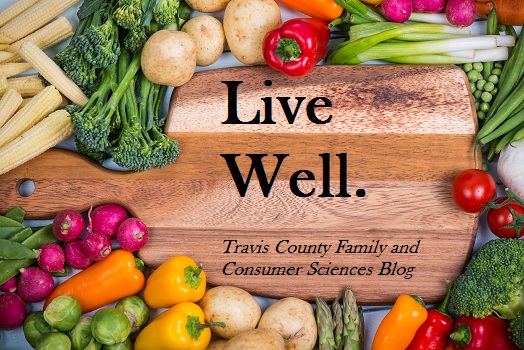-
Categories
-
Subscribe to Live Well!
-
Category Archives: Nutrition
The Difference Between the Dates
By: Rachel Nannola Ever wonder what the date on the side of a food package means? The United States Department of Agriculture (USDA) estimates that Americans throw away the equivalent of 162 billion dollars in food every year. The dates on the sides of packaging can be confusing, which is probably why people are throwing away food unnecessarily. So let’s talk about what each type of packaging date means: “Sell by” date tells the store how long to display the product, which means you should buy the product before… Read More →
What are Omega 3’s and 6’s?
By: Rachel Nannola An omega 3 is a polyunsaturated fatty acid (PUFA). There are three types of omega 3’s: alpha-linolenic acid (ALA), eicosapentaenoic acid (EPA), and docosahexaenoic acid (DHA). Omegas 3’s are found in fatty fish, walnuts, flaxseed oil, canola oil, and some other seeds and nuts. There is also another type of polyunsaturated fatty acid named omega 6. There are two types of omega 6s: linoleic acid (LA) and arachidonic acid (AA). Omegas 6s are found in meat and vegetable oils. Both ALA and LA are essential fatty acids,… Read More →
Plant-Based Diet Benefits
By: Rachel Nannola Unlike other “diets”, there is good reasoning behind switching to a plant-based diet. Plant-based diets have been proven to prevent and even reverse multiple nutrition-related diseases and conditions, including type 2 diabetes, cancer, heart disease, and high cholesterol. A plant-based diet is essentially what it sounds like: a nutrition plan that revolves around eating mostly non-animal products, including whole grains, legumes, fruits, vegetables, and nuts. A recent study conducted by Harvard T.H. Chan School of Public Health, however, found that not all plant-based diets do well for… Read More →
What Are Your Cravings Trying to Tell You?
By: Rachel Nannola I’ve never met a person who doesn’t deal with the occasional craving. Cravings can happen at all times of the day and can stem from much more than seeing a box of doughnuts in the office or walking past the vending machine. In just a few seconds, you can go from not being hungry to feeling like you need the doughnut. So why do we get cravings, and what do they mean? There are tons of different reasons behind our cravings, so let’s talk about… Read More →
The Power of Whole Grains
By: Amanda Schroeder Have you heard about all of the benefits that come from eating whole grains? Sure, the gluten-free trend has permeated our society, and you might even be eating that way and loving it, but research shows that whole grains are fantastic for your body! They are great sources of complex carbohydrates, low in fat, and contain a variety of vitamins and minerals. Plus, research has suggested that eating whole grain foods can reduce your risk of certain cancers, heart disease, diabetes, and obesity! Recently, the… Read More →
Micronutrient Monday: What Is Iodine?
By: Amanda Schroeder Of all of the minerals we readily consume, I’m sure I think about iodine the least. (And, weirdly, I think about minerals a lot!) The media hasn’t gone into a frenzy over it, like it has for other minerals (e.g. calcium). And since it isn’t the topic of too many of our everyday conversations, it’s easy to overlook. Iodine is a trace mineral, meaning we need it in very small quantities, but it packs a punch! It is a vital component of certain thyroid hormones… Read More →
Reducing Sodium In Your Diet
By: Rachel Nannola With high sodium intake leading to high blood pressure, stroke, heart failure, and kidney disease, it’s something that frequently gets talked about in the news. Something important to understand is that 75% of dietary sodium comes from packaged and restaurant foods, whereas only 11% comes from salt added to food by the consumer. Though sodium is something that’s essential in our diets for fluid balance, it’s still something we need to be careful about consuming. The average sodium intake of Americans is 3,400 mg/day, which… Read More →
Free Radicals and Antioxidants: A Love Story
By: Amanda Schroeder The terms “free radical” and “antioxidant” have been thrown around quite a bit lately in the media. In fact, I am nearly certain that you have heard about free radical damage, you might be concerned about it, and maybe you’re already using some type of antioxidant therapy in your own life to combat it. I am so happy to hear that you are trying to become a healthier you! But, do you know WHY you’re eating all of those blueberries or walnuts? “I’m doing it… Read More →
Micronutrient Monday: Vitamin E is the Bee’s Knees
By: Amanda Schroder I suspect that many of you have heard about vitamin E, or maybe you’ve even used vitamin E oil on your skin or hair, but do you know what it does inside your body? Well, firstly, what is it? Vitamin E is actually a blanket term that we use to describe 8 different fat-soluble compounds. As far as humans are concerned, the most important of these compounds is alpha-tocopherol (α-tocopherol). Vitamin E works primarily as an antioxidant, allowing it to protect your cells from the… Read More →
An Updated MyPlate Visual for Older Adults
By: Rachel Nannola The USDA MyPlate visual has proven to be very helpful in teaching people of all ages about good nutrition. With the Dietary Guidelines for Americans undergoing changes for 2015-2020, a new MyPlate visual specifically for older adults has recently been released. This new MyPlate visual is similar to the visual for all ages; it just has a few additions that makes it more suited for older adult nutrition guidelines. Some of the items pointed out in the new visual include: How frozen and canned fruits… Read More →
